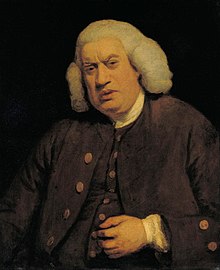Dramatic life of the ‘scourge’ of writers
 |
| A portrait of Giuseppe Baretti by the English painter Joshua Reynolds |
His life was often marred by controversies and he eventually had to leave Italy for England, where the drama in his life continued and he was tried at the Old Bailey for murder in 1769.
Baretti’s father had intended him to enter the legal profession but when he was 16 he fled from Turin to Guastalla in Emilia-Romagna where he worked in the import and export business.
His main interest was studying literature and criticism but, after he became an expert in the field himself, his writing was so controversial that he eventually had to move abroad.
Many students of Italian Literature are familiar with the name of Giuseppe Baretti as the writer, editor and proprietor of the fearlessly sarcastic periodical La frusta letteraria, which means 'Literary Scourge', in which he castigated bad authors.
For a few years Baretti wandered from country to country supporting himself by writing.
 |
| A Reynolds portrait of Samuel Johnson, the English writer who befriended Baretti |
Eventually he settled in London, where he was sometimes referred to as Joseph Baretti. He became Secretary of the Royal Academy of Arts and a friend of the writer Samuel Johnson and the actor and playwright David Garrick.
Baretti was a frequent visitor at the home of Hester Thrale, an author whose diaries have been a valuable source of information about both Johnson and 18th century contemporary life. Baretti’s name also occurs repeatedly in James Boswell’s Life of Samuel Johnson.
In 1769, Baretti was tried for murder after inflicting a mortal wound with a knife on a man who had assaulted him in the street. Johnson and other friends supported him and gave evidence in his favour at his trial, which resulted in his acquittal. Baretti could have been sentenced to death, but his actions were regarded as self-defence.
He later said he was extremely satisfied with the outcome of the trial and the support of his friends, which had made him ‘an Englishman forever’.
Baretti died in London in 1789 and was buried in Marylebone Chapel in the city.
 |
| The facade of the Palazzo Madama, which was designed by Filippo Juvara |
Turin, where Giuseppe Baretti was born, is the capital city of the region of Piedmont. It has some fine architecture that illustrates its rich history as the home of the Savoy Kings of Italy. Piazza Castello, with the royal palace, royal library and Palazzo Madama, which used to house the Italian senate, is at the heart of ‘royal’ Turin. The elegant Baroque Palazzo Madama, built in white stone, was designed by the architect Filippo Juvara.
 |
| The Piazza Mazzini is the beautiful main square of the town of Guastalla in Emilia-Romagna |
Guastalla, where Baretti went to escape a legal career, is a town in the province of Reggio Emilia in the region of Emilia-Romagna. It lies on the banks of the Po River in the Po Valley, about 30 kilometres (19 miles) from the cities of Reggio Emilia, Parma and Mantua. In the 16th century Guastallo was the capital of a duchy ruled by the Gonzaga family and it was visited by the artist Guercino and the writer Torquato Tasso. The town is the headquarters of SMEG, a manufacturer of high-design domestic appliances, which was founded there in 1948.
Also on this day:
1859: The birth of coffee maker Luigi Lavazza
1966: The birth of footballer Alessandro Costacurta
2010: The death of art collector Giuseppe Panza
Home









